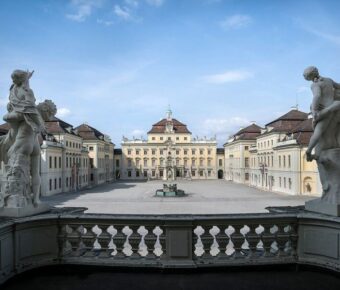
Madrid vs Paris: 5 Key Differences Every Traveler Should Know Before Booking
Madrid and Paris are two of Europe’s most vibrant capitals, each with unique charm. Both cities offer incredible museums, delicious food, and rich history, but differ in many ways. Madrid enjoys warmer temperatures and a more relaxed atmosphere, while Paris offers more tourist attractions and iconic landmarks that draw millions of visitors each year.
When choosing between these two magnificent cities, consider what you value most in your travels. Madrid shines with its authentic Spanish culture, lower population density, and more affordable experiences. The Spanish capital also benefits from being a great base for exploring other parts of Spain, with some travelers even suggesting a quick trip to Paris is possible with flights as low as 60 euros.
With its romantic reputation and world-famous sights like the Eiffel Tower and Louvre, Paris provides more variety for tourists. The City of Light has a certain magic that’s hard to define but impossible to forget, though it comes with larger crowds and higher prices than its Spanish counterpart.
Contents
- Historical Overview
- The Origins of Madrid
- The Evolution of Paris
- Cultural Landmarks
- Museums and Art Galleries in Paris
- Madrid’s Architectural Marvels
- Green Spaces and Parks
- The Gardens of Paris
- Madrid’s Urban Greenery
- Economic Perspectives
- Shopping in Paris: A Fashion Hub
- Madrid’s Mercantile Core
- Literary and Artistic Scene
- Paris: A Haven for Book Lovers
- Madrid’s Contemporary Artistic Landscape
- Leisure and Holidays
- Vacationing in Paris
- Madrid as a Holiday Destination
- Nightlife Comparison
- Parisian Evenings
- Madrid After Dark
- Exploring Neighborhoods
- The Quarters of Paris
- Madrid’s Distinct Barrios
- Urban Dynamics
- The Metropolitan Life in Paris
- Madrid: The Spanish Metropolis
- Frequently Asked Questions
- What are the key differences in climate between Madrid and Paris?
- Which city boasts a richer cultural heritage, Madrid or Paris?
- What travel options are available to go from Madrid to Paris?
- How do the cost of living and general expenses compare between Madrid and Paris?
- What unique experiences can tourists expect when visiting Madrid and Paris?
- How do the overall safety and healthcare services in Madrid and Paris differ?
- More Travel Guides
Historical Overview
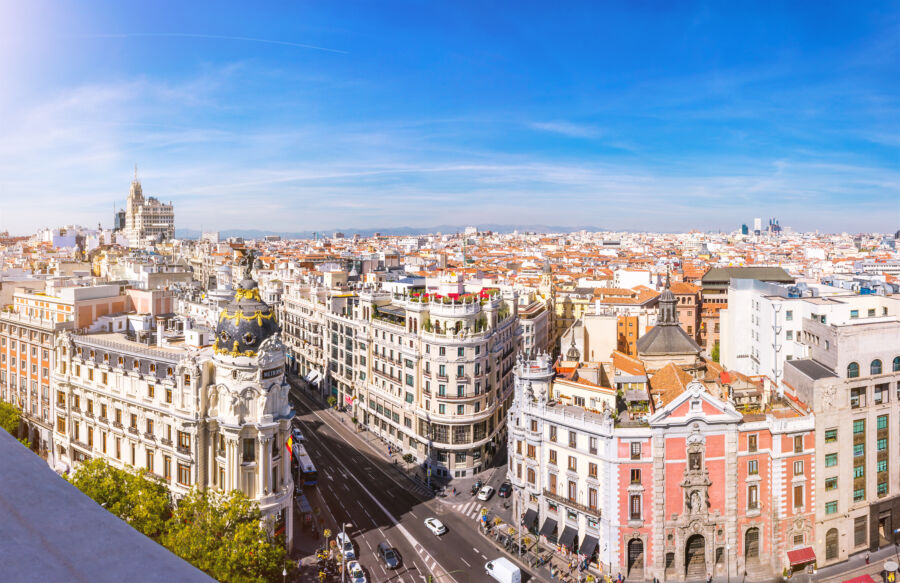
Madrid and Paris have evolved differently over centuries, shaped by unique cultural, political, and architectural influences. Both capitals have fascinating origin stories and development paths reflecting their Spanish and French heritage.
The Origins of Madrid
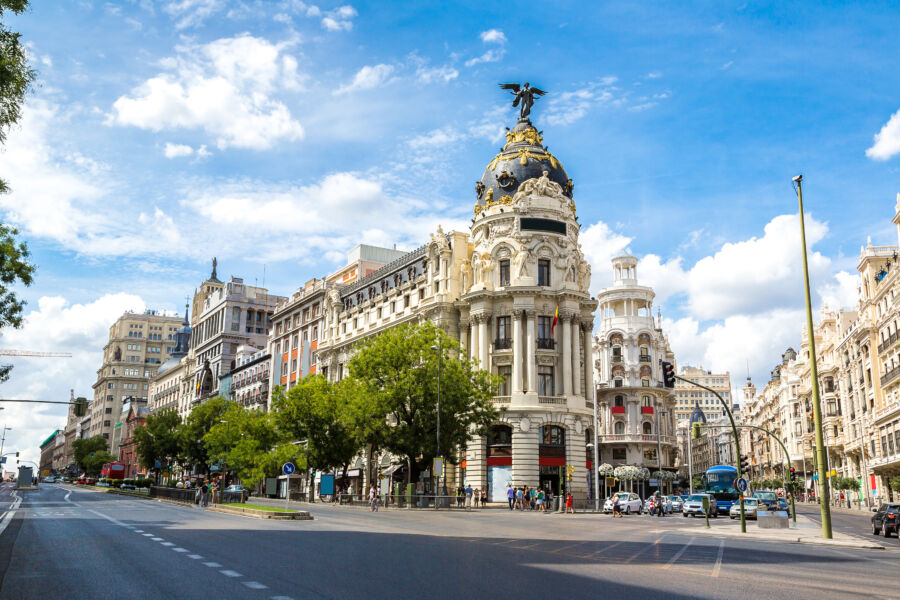
Madrid’s beginnings were humble compared to other European capitals. In the 9th century, the city started as a small Moorish fortress called “Mayrit.” Its strategic location by the Manzanares River made it valuable for defense purposes.
King Philip II changed Madrid’s destiny in 1561 when he declared it Spain’s capital. Before this surprising decision, Madrid was just a modest town. The Hapsburg dynasty then transformed the city, creating the Plaza Mayor and other iconic spaces.
Madrid grew slowly but steadily. In the 18th century, the Bourbon kings, especially Carlos III (nicknamed Madrid’s “best mayor”), added beautiful buildings and improved city planning. They built wide boulevards, fountains, and monuments that still define the city today.
The Evolution of Paris

Paris has much older roots than Madrid, dating back to a Celtic settlement called Lutetia on the Île de la Cité around 250 BCE. The Romans later developed this area, establishing the foundation for Paris.
The city gained importance during the Medieval period when it became the seat of French royal power. By the 12th century, Notre-Dame Cathedral was under construction, and the University of Paris was attracting scholars from across Europe.
Paris underwent a dramatic transformation during the 19th century. Between 1853 and 1870, Emperor Napoleon III and Baron Haussmann redesigned the city, creating the wide boulevards and uniform building facades we recognize today.
Unlike Madrid’s more gradual evolution, Paris experienced dramatic urban renewal projects. The Eiffel Tower, built for the 1889 World’s Fair, became the city’s defining landmark. Throughout its history, Paris has maintained its position as a global center for art, fashion, and culture.
Cultural Landmarks
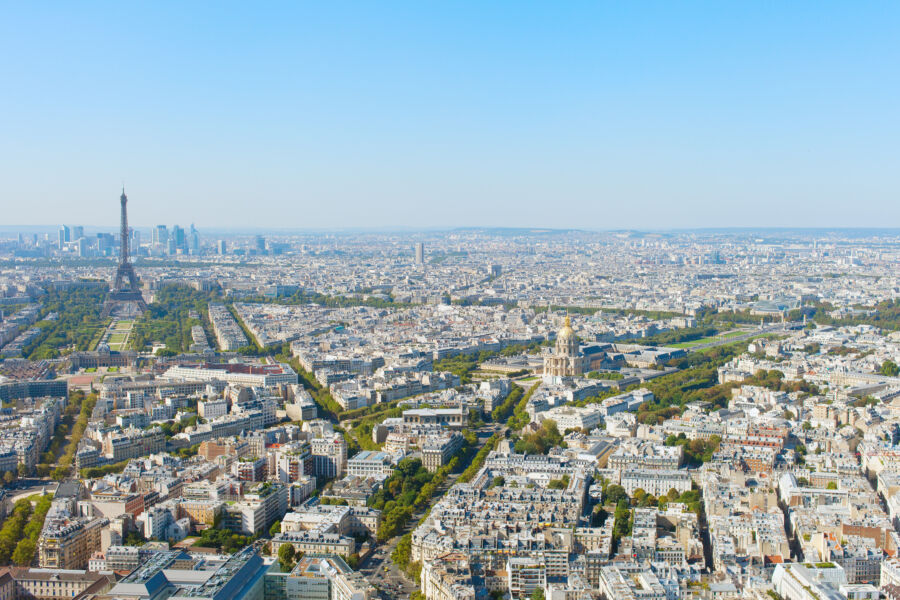
Madrid and Paris boast incredible cultural landmarks that draw millions of visitors annually. The cities showcase different artistic styles and historical influences that reflect their unique national identities.
Museums and Art Galleries in Paris
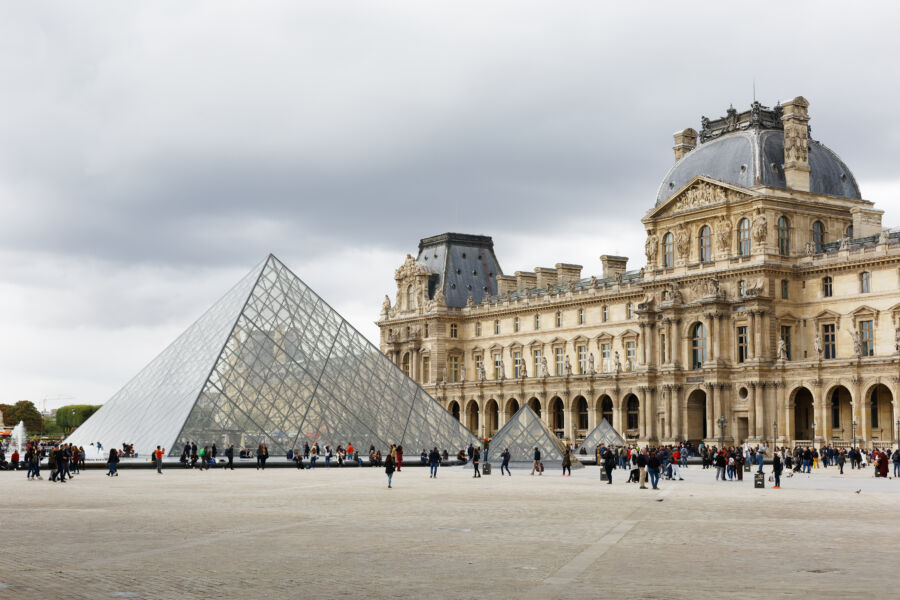
Paris is often called the world’s art capital, and for good reason! The Louvre is the crown jewel, housing over 35,000 artworks, including the famous Mona Lisa and Venus de Milo. It’s not just big—it’s the world’s largest art museum.
But Paris offers much more than just the Louvre. The Musée d’Orsay, housed in a former railway station, displays an impressive collection of Impressionist masterpieces by Monet, Renoir, and Van Gogh.
Centre Pompidou breaks the mold with its inside-out architecture and modern art collection. Its unique design places all structural elements on the outside, creating more exhibition space inside.
For a more intimate experience, the Rodin Museum showcases the sculptor’s famous works, such as “The Thinker,” in a beautiful garden setting.
Madrid’s Architectural Marvels

Madrid may be younger than Paris, but its architectural heritage is equally impressive. The Royal Palace (Palacio Real) is Spain’s largest royal palace, with over 3,000 rooms and baroque splendor that rivals Versailles.
Plaza Mayor represents the heart of old Madrid. This perfectly symmetrical square, with its red façades and a central statue of King Philip III, offers a glimpse into Spain’s golden age.
The Almudena Cathedral took nearly 100 years to build. It combines neoclassical, neo-Gothic, and neo-Romanesque styles. Its colorful modern interior contrasts beautifully with traditional cathedrals.
Gran Vía, Madrid’s main shopping street, features stunning early 20th-century buildings like the Metropolis Building with its distinctive dome topped by a winged victory statue.
The city’s most charming area might be the Literary Quarter (Barrio de las Letras), where narrow streets and historic buildings once housed Spain’s greatest writers.
Green Spaces and Parks
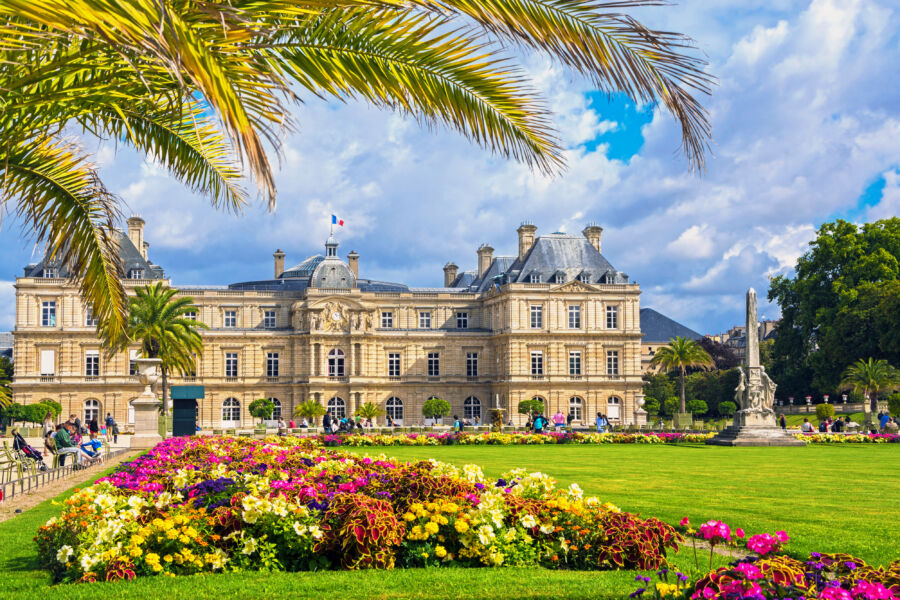
Madrid and Paris offer beautiful green spaces for residents and visitors, though they differ significantly in their approach to urban greenery. Madrid boasts more tree cover, while Paris offers iconic, meticulously designed gardens despite less green space.
The Gardens of Paris

Paris may have less green space than other European capitals, with only about 20 percent of the city under tree cover. However, what Paris lacks in quantity makes up for quality and historical significance.
The Luxembourg Gardens remain one of the city’s most beloved spaces, where Parisians relax on iconic green chairs surrounding the central fountain. The perfectly manicured Tuileries Gardens offer a formal French garden experience between the Louvre and Place de la Concorde.
Paris is currently working on innovative green initiatives. The city has planned to convert concrete schoolyards into “islands of cool” to provide relief during increasingly frequent heat waves. These projects aim to combat rising temperatures and improve the urban environment.
Madrid’s Urban Greenery

Madrid significantly outpaces Paris regarding green coverage, with approximately 39 percent of the city under tree cover. This makes the Spanish capital one of the greener major cities in Europe.
El Retiro Park is Madrid’s crown jewel, a massive 350-acre oasis with a beautiful lake, formal gardens, and the Crystal Palace. Locals flock here to row boats, picnic, and enjoy street performers on weekends. Casa de Campo, originally a royal hunting estate, is now Madrid’s largest park, spanning over 1,700 hectares – five times larger than New York’s Central Park! It features a lake, amusement park, and cable car with stunning city views.
Madrid’s commitment to urban greenery continues with projects expanding pedestrian zones and creating more community green spaces throughout the city. Madrid’s parks often feel more relaxed and natural than Paris’s formal gardens.
See Related: Madrid vs London: Key Differences Every Savvy Traveler Should Know
Economic Perspectives

Madrid and Paris are economic powerhouses in Europe, each with distinctive commercial strengths that shape their urban identities. Their economic landscapes reflect different priorities and cultural values that become evident in their commercial centers.
Shopping in Paris: A Fashion Hub
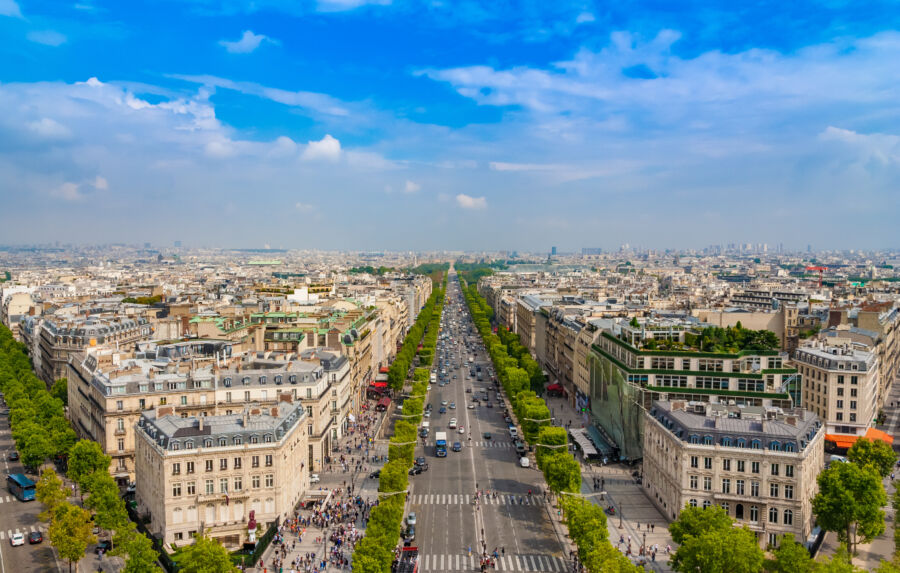
Paris has earned its reputation as the world’s fashion capital. The famous Champs-Élysées offers luxury shopping with flagship stores of brands like Louis Vuitton and Chanel. Boutiques nestled in the charming streets of Le Marais showcase unique creations by independent designers.
The city’s department stores, particularly Galeries Lafayette and Printemps, are attractions. Their stunning architecture and elaborate seasonal window displays draw tourists year-round.
Shopping in Paris comes at a premium—prices tend to be higher than in Madrid. This reflects the city’s higher average salary ($3,250 compared to Madrid’s $2,411) and overall cost of living.
Fashion Week transforms Paris twice yearly, boosting the economy as industry professionals flood hotels and restaurants. The event reinforces Paris’s position as a global trendsetter and economic force in the fashion industry.
Madrid’s Mercantile Core

Madrid has emerged as a rising economic star in Europe. Recent reports show it surpassing Paris as Europe’s second destination for real estate investment, trailing only London. This growth reflects Madrid’s business-friendly environment and strategic location.
The Gran Vía is Madrid’s commercial heartbeat, with international chains and local businesses. El Corte Inglés, Spain’s largest department store, anchors several shopping districts throughout the city with its comprehensive offerings.
Madrid’s markets offer a different shopping experience. Mercado San Miguel, near Plaza Mayor, combines traditional market stalls with gourmet dining options. El Rastro, Europe’s largest open-air flea market, transforms La Latina neighborhood every Sunday.
Madrid has lower operating costs than Paris, making it attractive for business development. With Madrid projected to maintain its position among Europe’s top cities for office employment through 2050, its commercial significance continues to grow.
Literary and Artistic Scene
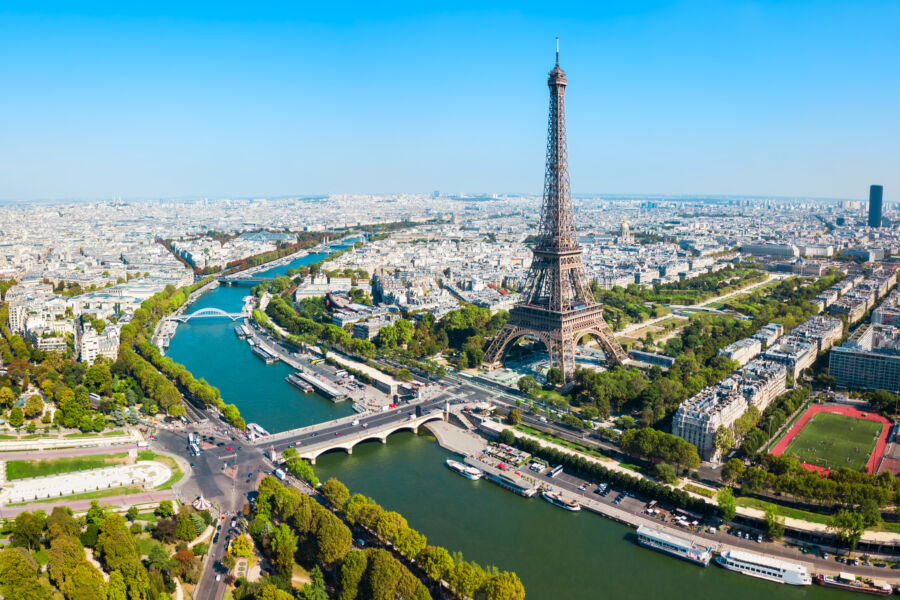
Madrid and Paris boast rich cultural landscapes that have attracted artists and writers throughout history. The two capitals offer distinctive environments for creative minds, from historic cafés where literary giants once gathered to modern galleries showcasing cutting-edge works.
Paris: A Haven for Book Lovers

Paris has long been a magnet for literary souls. The Left Bank’s Shakespeare and Company bookstore stands as an iconic landmark where expat writers like Hemingway and Fitzgerald once browsed.
Parisian cafés like Les Deux Magots and Café de Flore were second homes to literary giants such as Sartre and de Beauvoir. Even today, you’ll spot locals reading in these historic establishments.
The city maintains its bookish reputation with over 1,000 bookshops scattered across its arrondissements. Literature fans can trace the footsteps of Victor Hugo through the Marais or visit the haunts of the Lost Generation writers.
Paris also nurtures a vibrant publishing scene that continues influencing global literary trends. Annual events like Salon du Livre draw thousands of book lovers to celebrate the written word.
Madrid’s Contemporary Artistic Landscape

Madrid’s art scene pulses energy that often flies under the radar compared to its French counterpart. The city’s Golden Triangle of Art—comprising the Prado, Reina Sofía, and Thyssen-Bornemisza museums—anchors its cultural credentials.
What makes Madrid special is its evolving contemporary art landscape. The search results mention that Madrid offers “a livelier and more dynamic” art scene than many expect. Neighborhoods like Malasaña have transformed into creative hubs with indie galleries and street art.
Unlike Paris’s often people-filled canvases, Madrid’s artists frequently create street scenes “devoid of human beings and quite simple in their composition,” focusing on “beautiful order and perfection.” The Spanish capital provides artists with more affordable studio spaces than Paris, attracting creatives priced out of other European capitals. This accessibility has helped fuel Madrid’s reputation as an emerging art destination where tradition meets innovation.
Leisure and Holidays
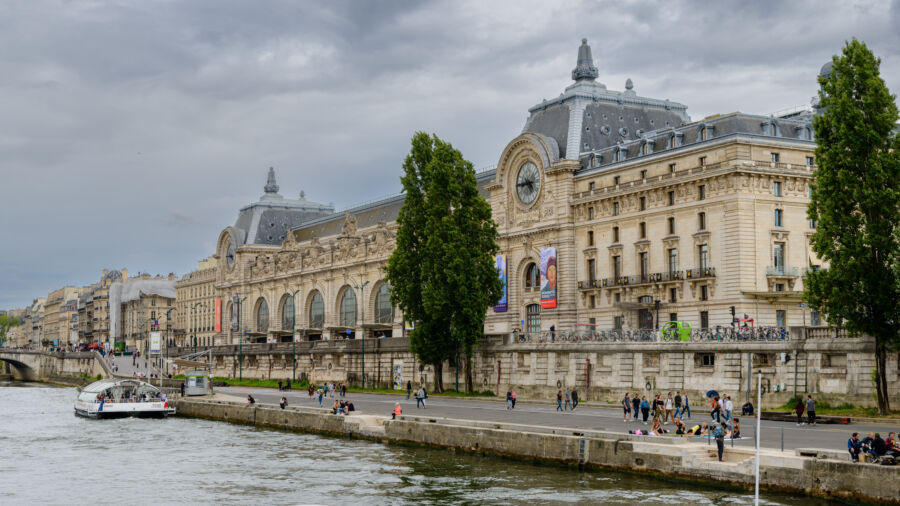
When choosing between Madrid and Paris for a holiday, each city offers distinct experiences for travelers. Both capitals shine with their unique charm, cultural attractions, and leisure options that cater to different vacation styles.
Vacationing in Paris
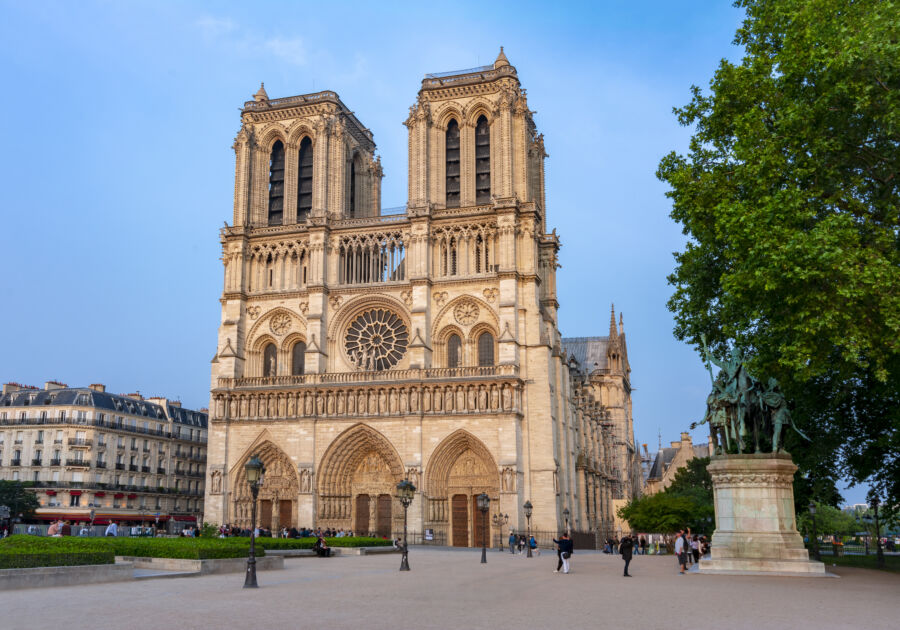
Paris has earned its reputation as a dream holiday destination for good reason. The city exudes romance and elegance at every turn. Iconic attractions like the Eiffel Tower, Louvre Museum, and Notre Dame Cathedral are top visitors’ must-see lists.
The city is divided into charming neighborhoods (arrondissements), each with a distinct personality. Montmartre offers artistic vibes and stunning city views, while Le Marais delights with trendy boutiques and cafés.
Paris shines in cultural variety, making it perfect for art enthusiasts. Beyond museums, visitors enjoy luxurious shopping along Champs-Élysées and Seine River cruises to get a different perspective of the city.
Food lovers find paradise in Paris’s culinary scene. From neighborhood bistros to Michelin-starred restaurants, the dining options satisfy every palate and budget.
Madrid as a Holiday Destination

Madrid delivers a more relaxed holiday experience than Paris, with locals embracing the “work to live” philosophy. The city comes alive at night, with dinner starting after 9 pm and nightlife continuing until dawn.
The Spanish capital offers excellent value for travelers. Hotel accommodations and dining experiences generally cost less than Paris while maintaining high quality. Visitors can enjoy authentic tapas crawls through neighborhoods like La Latina without breaking the bank.
Madrid’s Golden Triangle of Art features three world-class museums within walking distance: the Prado, Reina Sofía, and Thyssen-Bornemisza. The sprawling El Retiro Park provides a peaceful retreat from urban exploration.
Day trips from Madrid add variety to a holiday itinerary. Historic towns like Toledo, Segovia, and Ávila make perfect excursions when booking tours from the capital. Summer visitors should note Madrid’s intense heat, which regularly exceeds 95°F (35°C), while Paris maintains milder summer conditions.
See Related: Paris vs Seoul: Surprising Differences Between These Iconic Citiesp
Nightlife Comparison

Paris and Madrid offer vastly different nightlife experiences, with distinct rhythms and cultural approaches to evening entertainment. Each city has its unique charm after dark.
Parisian Evenings

Paris’s nightlife tends to be more refined and ends earlier than Madrid’s. Most bars close around 2 AM, with only a handful of clubs staying open until dawn. The city’s evenings often begin with apéritifs at trendy wine bars or classic cafés.
The Oberkampf and Bastille areas attract younger crowds with hipster bars and casual venues. For a more upscale experience, the Champs-Élysées and Saint-Germain-des-Prés neighborhoods offer elegant cocktail lounges and jazz clubs.
Parisians typically start their evenings with dinner around 8 PM, much earlier than their Spanish counterparts. The city’s nightlife focuses more on quality conversation, artistic performances, and culinary experiences than all-night partying. Seine river cruises with dinner and dancing provide a uniquely Parisian nighttime experience that many visitors enjoy.
Madrid After Dark

Madrid truly comes alive at night. The city’s famous nightlife doesn’t begin until after 11 PM, and most locals don’t head to clubs until after 1 AM. The energy continues until sunrise, with many venues open until 6 AM.
The Malasaña district is known for alternative bars and indie music venues. Chueca offers the best LGBTQ+ nightlife, while Salamanca provides upscale options for those seeking more refined experiences.
Madrid’s nightlife culture embraces the concept of “marcha” – moving from bar to bar throughout the night. This bar-hopping tradition lets visitors experience multiple venues in one evening.
Street life remains vibrant well into the early hours, with people chatting, drinking, and socializing outdoors. The city’s relaxed public drinking laws contribute to its thriving night scene, making it easier to organize impromptu gatherings.
Exploring Neighborhoods
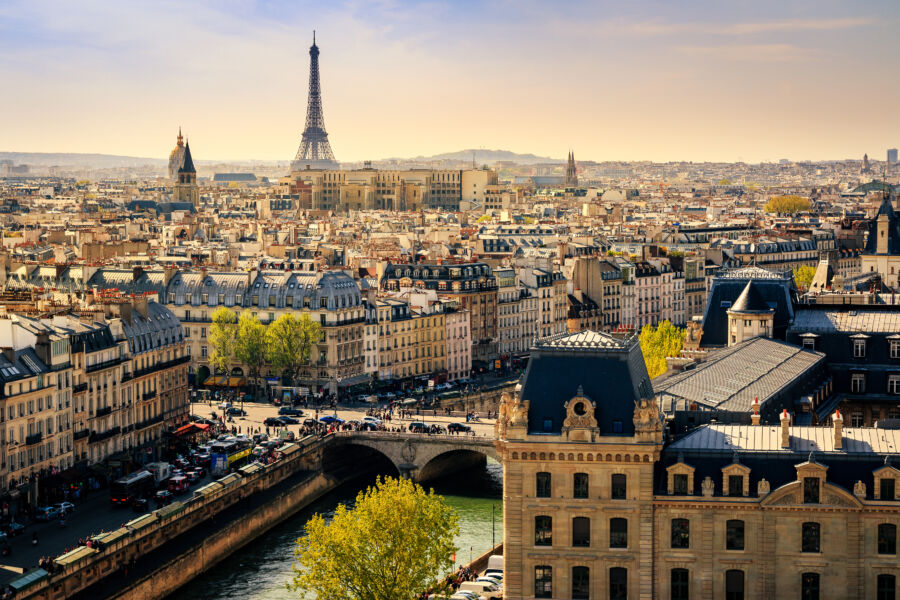
Madrid and Paris shine through their unique neighborhoods, offering visitors a special taste of local culture, food, and lifestyle. These distinct areas showcase the true character of each city beyond the famous attractions.
The Quarters of Paris
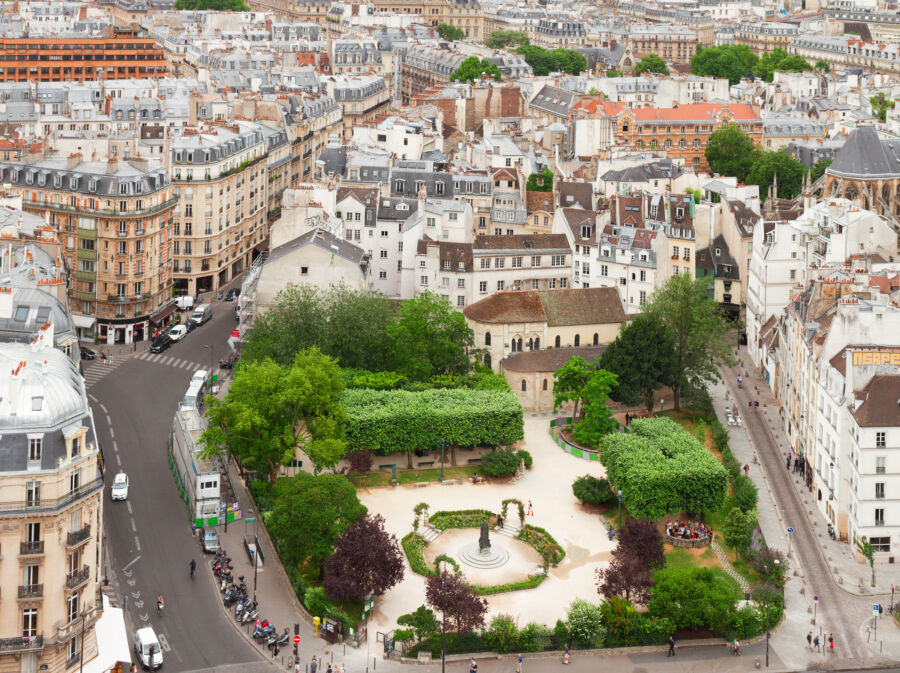
Paris is divided into 20 arrondissements (districts) that spiral outward like a snail shell from the city center. Each has its personality and charm.
The elegant 1st arrondissement houses the Louvre and Royal Gardens, while the trendy Marais (3rd and 4th) offers boutique shopping and hip cafés. Many visitors love its narrow medieval streets and vibrant Jewish quarter.
Montmartre (18th) sits high on a hill with its artistic heritage and the white-domed Sacré-Cœur Basilica offering amazing city views. The Latin Quarter (5th) buzzes with student energy around Sorbonne University.
For a less touristy experience, try Canal Saint-Martin (10th) with its waterside restaurants and bohemian vibe. Each Paris neighborhood feels almost like its own village, with distinct architecture and atmosphere.
Madrid’s Distinct Barrios

Madrid’s neighborhoods provide diverse experiences within a more compact area than Paris. Each barrio showcases different aspects of Spanish life and culture.
Sol and Gran Vía form the bustling heart of Madrid, where locals and tourists mix in busy plazas and shopping streets. Nearby, the Literary Quarter (Barrio de las Letras) charms with cobblestone lanes and connections to Spain’s greatest writers.
Malasaña draws a younger crowd with its cool bars, vintage shops, and street art. This neighborhood transformed from a countercultural hotspot to one of Madrid’s trendiest areas.
Salamanca offers Madrid’s version of luxury for upscale shopping and elegant boulevards. Meanwhile, multicultural Lavapiés delivers authentic food experiences with its global restaurants and community vibe.
La Latina comes alive on Sundays with its famous El Rastro flea market and excellent tapas bars. Each barrio gives visitors a unique window into Madrid’s diverse personality.
Urban Dynamics
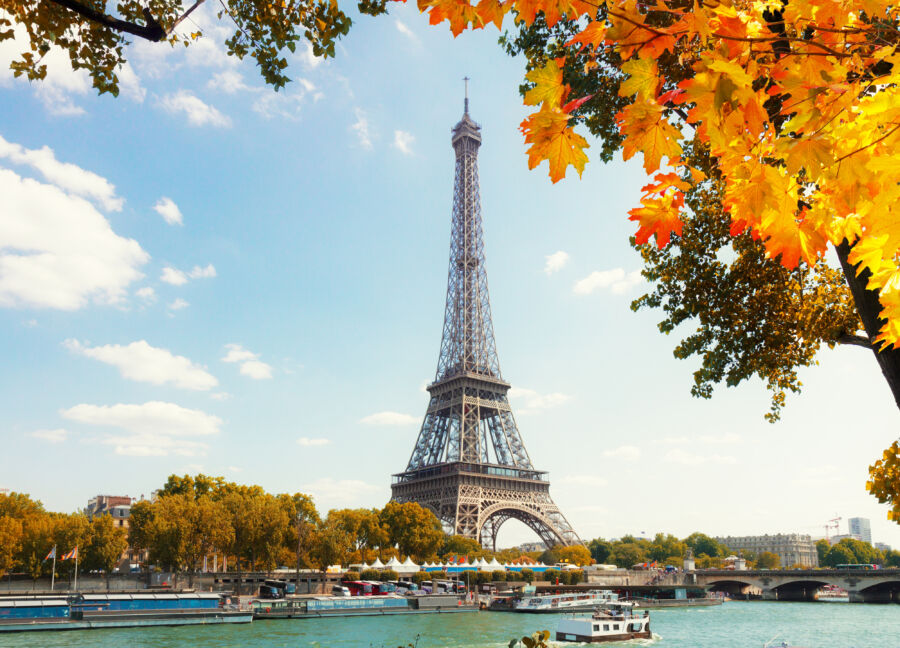
Despite being major European capitals, Paris and Madrid offer different urban experiences. Their city rhythms, population patterns, and daily life reflect unique cultural identities that shape how residents and visitors experience these metropolises.
The Metropolitan Life in Paris
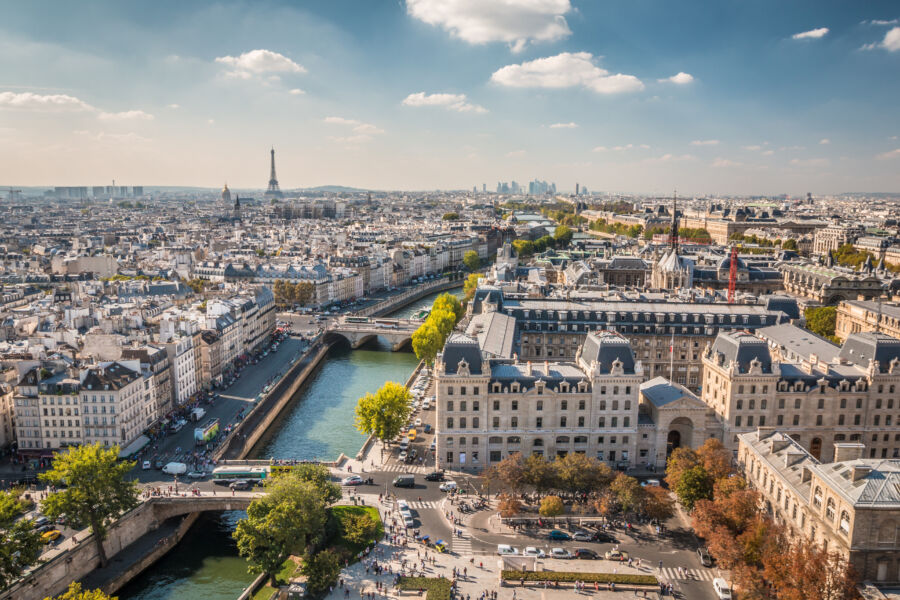
Paris buzzes with an elegant intensity that’s hard to match. The city packs about 21,000 people per square kilometer—much denser than Madrid’s more spread-out population. This density creates a vibrant street life where cafés overflow onto sidewalks and parks filled with locals enjoying leisure time.
The Parisian metro system is legendary, whisking people efficiently across the city’s 20 arrondissements. Most Parisians don’t own cars and prefer walking or using public transit.
Cultural life in Paris feels deeply embedded in daily routines. Locals might stop at a museum after work or spend Sunday afternoons at small art galleries. Despite its reputation for sophistication, Paris struggles with issues common to big cities—housing costs force many to live in suburban areas and commute into the city center.
Madrid: The Spanish Metropolis

Madrid moves to a different rhythm than Paris, with its Spanish pace bringing a relaxed yet energetic vibe. The streets come alive later in the day, with locals enjoying dinner past 9 PM and nightlife that extends into the early morning hours.
The city offers more breathing room and a lower population density. Madrid’s layout features wider avenues and more spacious urban planning than Paris’s medieval street patterns. The Gran Vía and Paseo del Prado showcase this airier approach to city design.
Madrid’s old town districts burst with color and warmth. Small plazas create natural gathering spots where locals socialize over tapas and drinks. The Retiro Park gives residents a massive green escape that feels more integrated into daily life than Paris’s more formal gardens.
Many visitors find Madrid’s energy more approachable and less overwhelming than Paris’s intensity. The Spanish capital maintains a neighborhood feel despite being a major metropolis.
See Related: Best Places to Visit in Europe This Year
Frequently Asked Questions
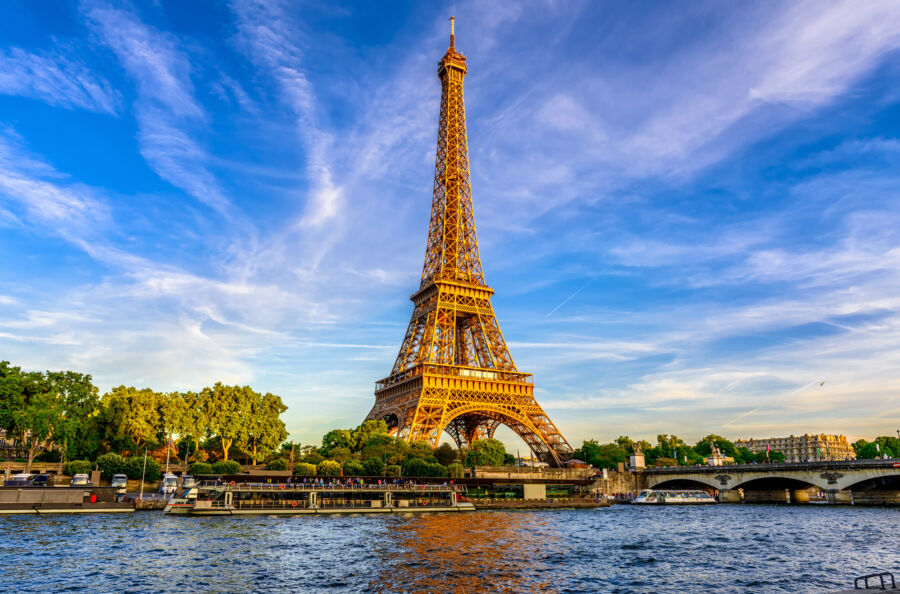
Madrid and Paris offer distinct travel experiences with major climate, culture, and cost differences. Visitors often have specific questions when deciding between these European capitals.
What are the key differences in climate between Madrid and Paris?
Madrid enjoys a Mediterranean climate with hot, dry summers and mild winters. Temperatures often reach above 86°F (30°C) in summer months with very little rainfall.
Paris has a more temperate oceanic climate. Summers are warm but rarely extremely hot, while winters can be chilly with occasional snow. Paris receives more rainfall throughout the year compared to Madrid.
When temperatures are pleasant, the best time to visit Madrid is spring (April to June) or fall (September to November). Paris is lovely year-round, though spring and fall offer the most comfortable weather.
Which city boasts a richer cultural heritage, Madrid or Paris?
Both cities have extraordinary cultural offerings, but they differ in focus. Paris houses iconic art collections at the Louvre, Musée d’Orsay, Center Pompidou, and architectural wonders like Notre Dame and the Eiffel Tower.
Madrid’s cultural scene centers around the Golden Triangle of Art: the Prado, Reina Sofía, and Thyssen-Bornemisza museums. The city preserves Spanish royal heritage at the Royal Palace and Plaza Mayor.
Paris generally offers more variety in attractions and activities, while Madrid excels in showcasing Spanish history and art. The cities represent different cultural traditions—French versus Spanish—each with unique contributions to European heritage.
What travel options are available to go from Madrid to Paris?
Flying is the fastest option, with direct flights taking about 2 hours. Several airlines operate this route daily from Madrid-Barajas to Paris Charles de Gaulle or Orly airports.
High-speed trains connect the cities via the Spanish AVE and French TGV networks. The journey takes approximately 9-10 hours, with a connection in Barcelona, and offers scenic views.
For budget travelers, long-distance buses operate between Madrid and Paris. The trip takes around 16-18 hours but costs significantly less than flying or taking the train.
How do the cost of living and general expenses compare between Madrid and Paris?
Paris ranks among Europe’s most expensive cities, with higher accommodation, dining, and attractions costs. A mid-range hotel room costs 30-50% more than in Madrid.
Madrid offers better value for money in almost all categories. Restaurant meals, public transportation, and entertainment are cheaper in the Spanish capital.
Housing costs show the biggest difference—both for tourists and residents. Renting an apartment in central Paris can cost twice as much as a comparable place in Madrid, making Madrid more budget-friendly.
What unique experiences can tourists expect when visiting Madrid and Paris?
In Madrid, visitors can enjoy authentic flamenco shows, explore bustling food markets like Mercado de San Miguel, and experience the lively “tapeo” (tapas crawl) culture in neighborhoods like La Latina. Paris offers romantic Seine River cruises, exploration of historic districts like Montmartre, and the chance to picnic beneath the Eiffel Tower. The café culture here is unmatched, with charming sidewalk establishments throughout the city.
Both cities come alive at night but on different schedules. Madrid’s nightlife starts late and continues until dawn, while Paris offers elegant evening entertainment with earlier closing times.
How do the overall safety and healthcare services in Madrid and Paris differ?
Both cities are generally safe for tourists, though petty theft and scams can occur in crowded areas. However, some tourists have reported slightly higher pickpocketing rates in Paris, particularly around major attractions.
Madrid ranks one of Europe’s safest capital cities with lower crime rates. The city’s layout and extensive police presence contribute to its safety record.
Healthcare services are excellent in both locations, with France’s system often ranked among the world’s best. Both countries offer universal healthcare to residents, while visitors should have travel insurance to cover any medical needs.


